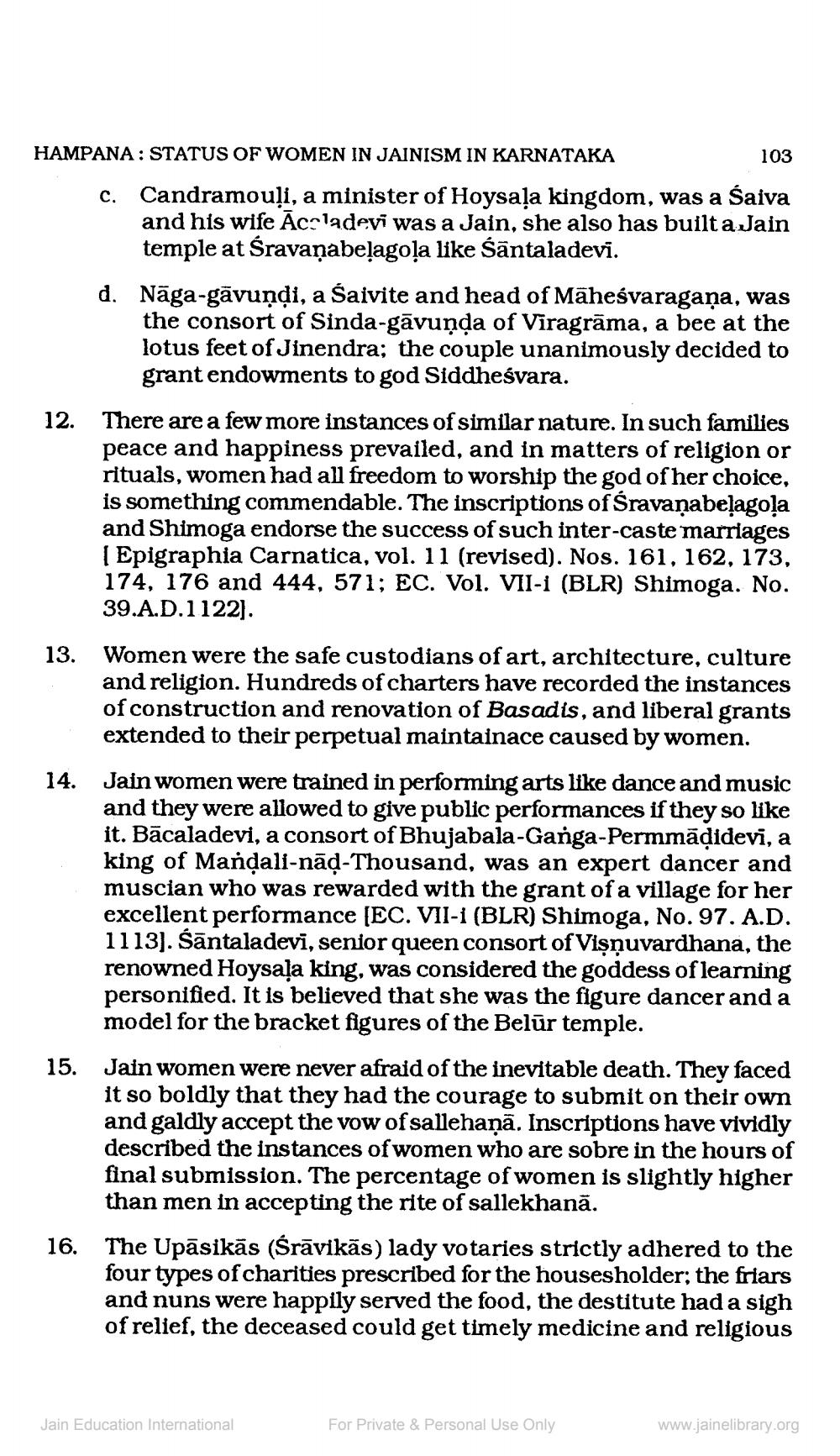________________
HAMPANA: STATUS OF WOMEN IN JAINISM IN KARNATAKA
103 c. Candramouļi, a minister of Hoysaļa kingdom, was a Saiva
and his wife Acaladevi was a Jain, she also has built a Jain
temple at Śravanabelagoļa like śāntaladevi. d. Nāga-gāvundi, a Saivite and head of Māheśvaragaņa, was
the consort of Sinda-gāvuņda of Viragrāma, a bee at the lotus feet of Jinendra; the couple unanimously decided to
grant endowments to god Siddheśvara. 12. There are a few more instances of similar nature. In such families
peace and happiness prevailed, and in matters of religion or rituals, women had all freedom to worship the god of her choice, is something commendable. The inscriptions of Śravanabeļagola and Shimoga endorse the success of such inter-caste marr ( Epigraphia Carnatica, vol. 11 (revised). Nos. 161, 162, 173, 174, 176 and 444, 571; EC. Vol. VII-1 (BLR) Shimoga. No. 39.A.D.1122).
13. Women were the safe custodians of art, architecture, culture
and religion. Hundreds of charters have recorded the instances of construction and renovation of Basadis, and liberal grants extended to their perpetual maintainace caused by women.
14.
Jain women were trained in performing arts like dance and music and they were allowed to give public performances if they so like it. Bācaladevi, a consort of Bhujabala-Ganga-Permmāạidevi, a king of Mandali-nād-Thousand, was an expert dancer and muscian who was rewarded with the grant of a village for her excellent performance (EC. VII-I (BLR) Shimoga, No. 97. A.D. 1113]. śāntaladevi, senior queen consort of Vişnuvardhana, the renowned Hoysala king, was considered the goddess of learning personified. It is believed that she was the figure dancer and a model for the bracket figures of the Belūr temple. Jain women were never afraid of the inevitable death. They faced it so boldly that they had the courage to submit on their own and galdly accept the vow of sallehaņā. Inscriptions have vividly described the instances of women who are sobre in the hours of final submission. The percentage of women is slightly higher than men in accepting the rite of sallekhanā. The Upāsikās (Śrāvikās) lady votaries strictly adhered to the four types of charities prescribed for the housesholder; the friars and nuns were happily served the food, the destitute had a sigh of relief, the deceased could get timely medicine and religious
15.
16.
Jain Education International
For Private & Personal Use Only
www.jainelibrary.org




